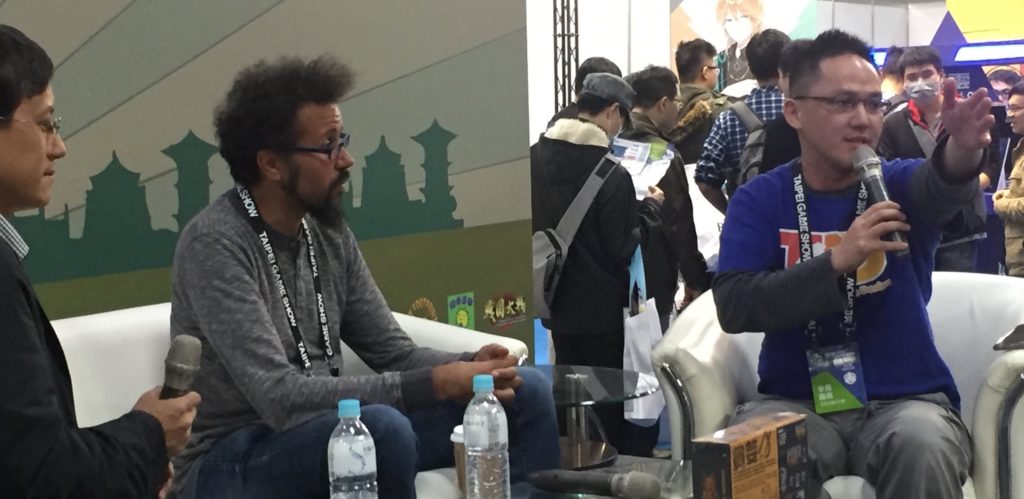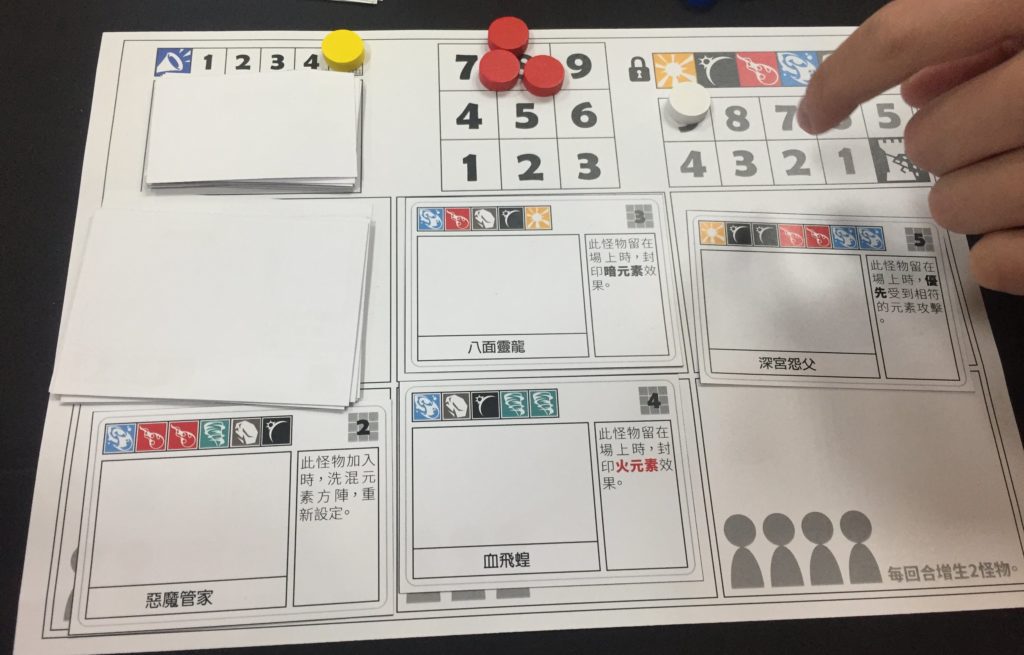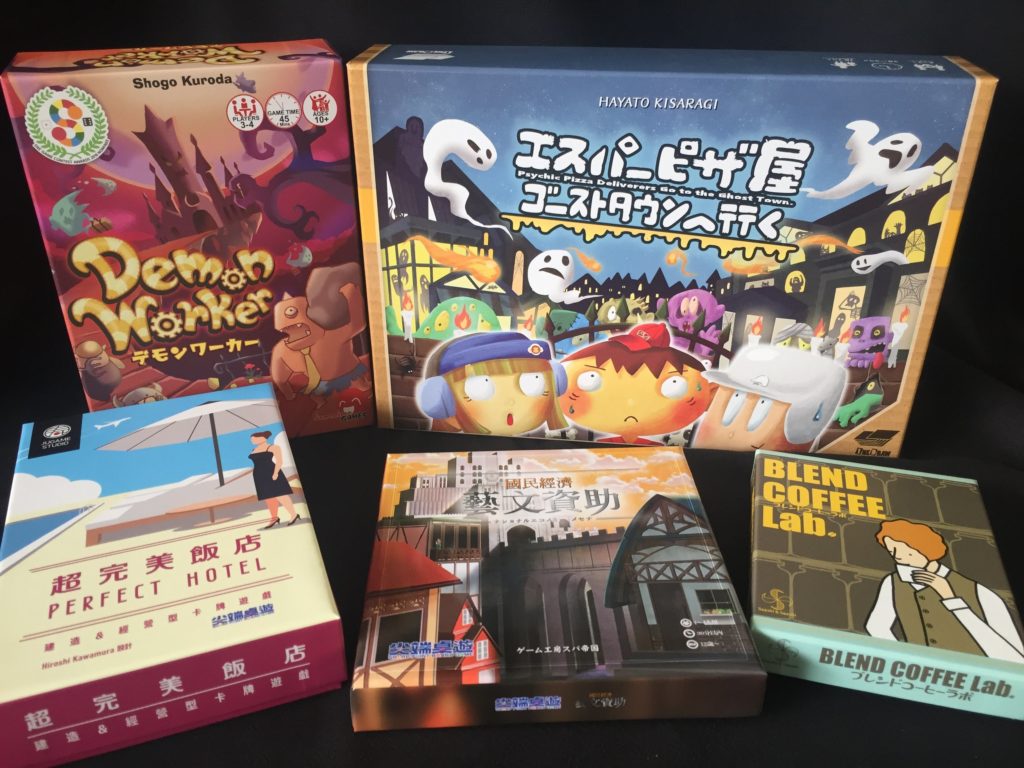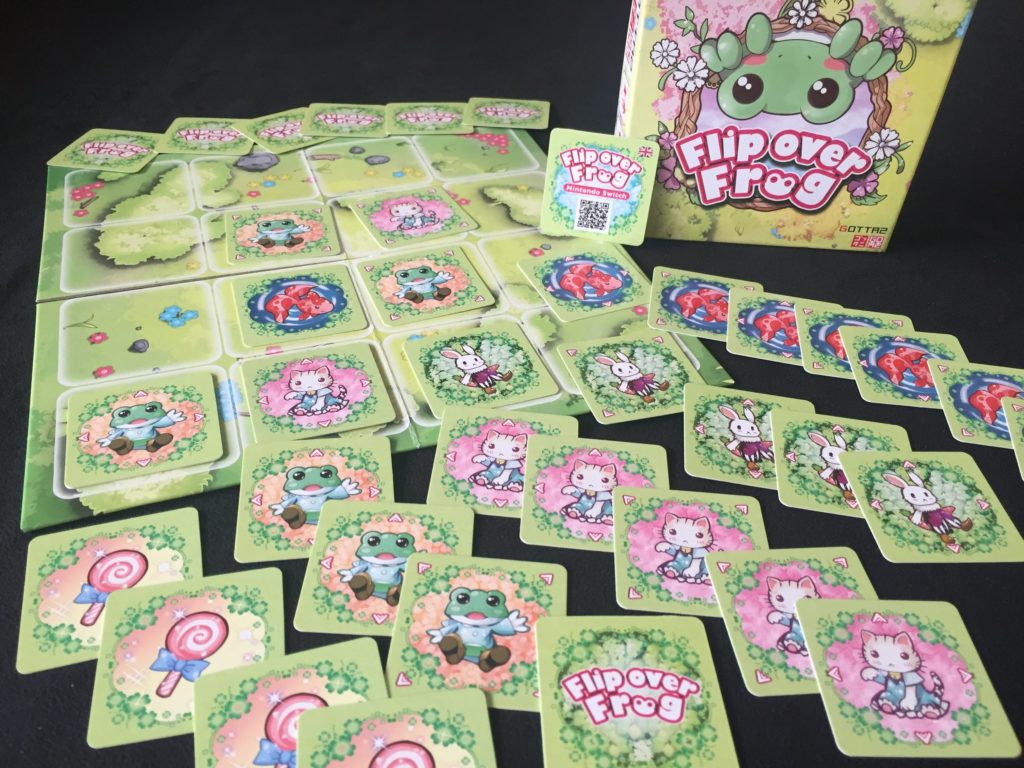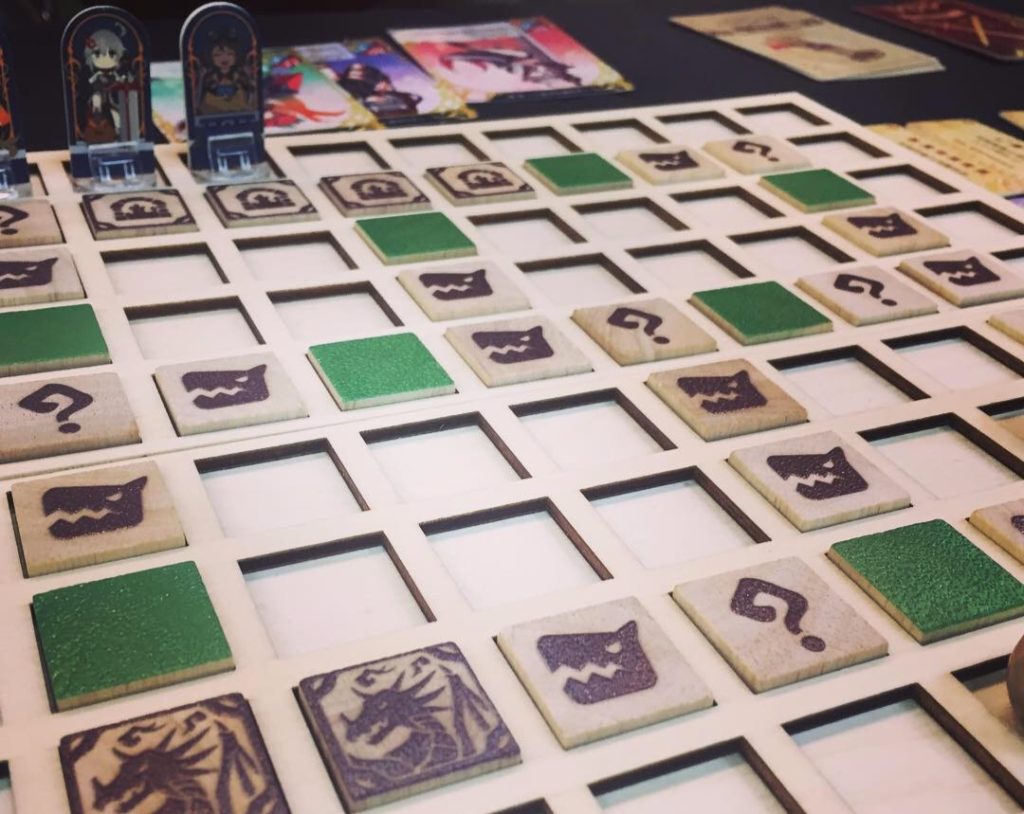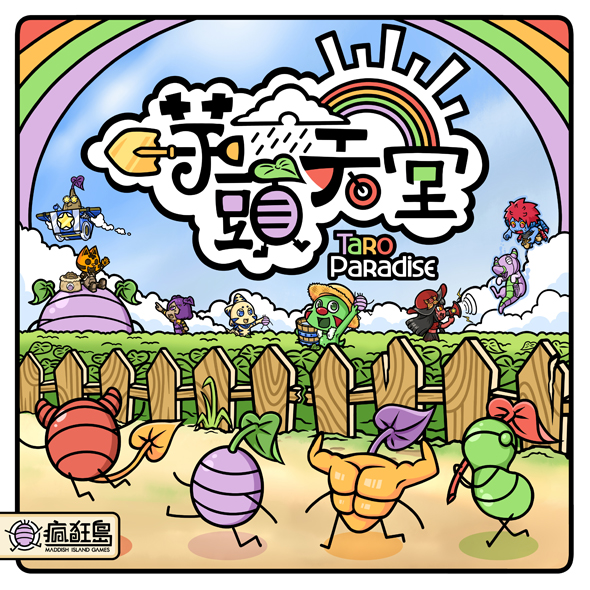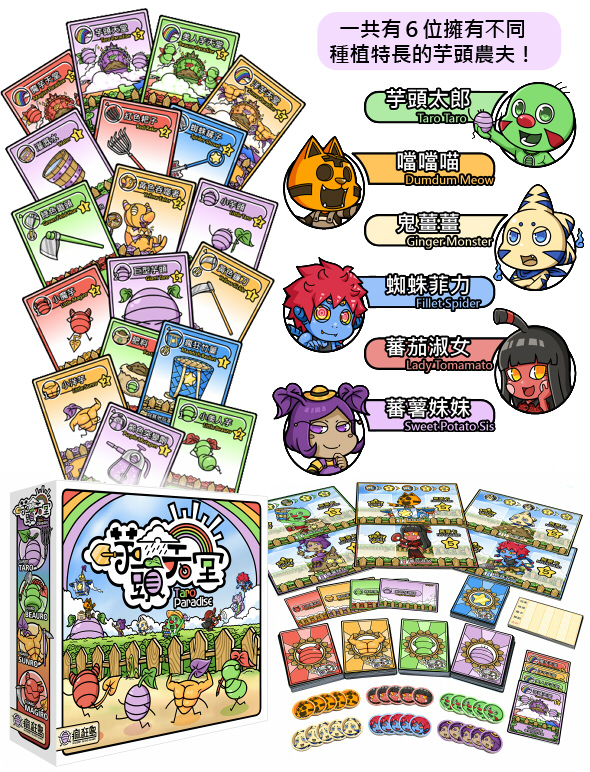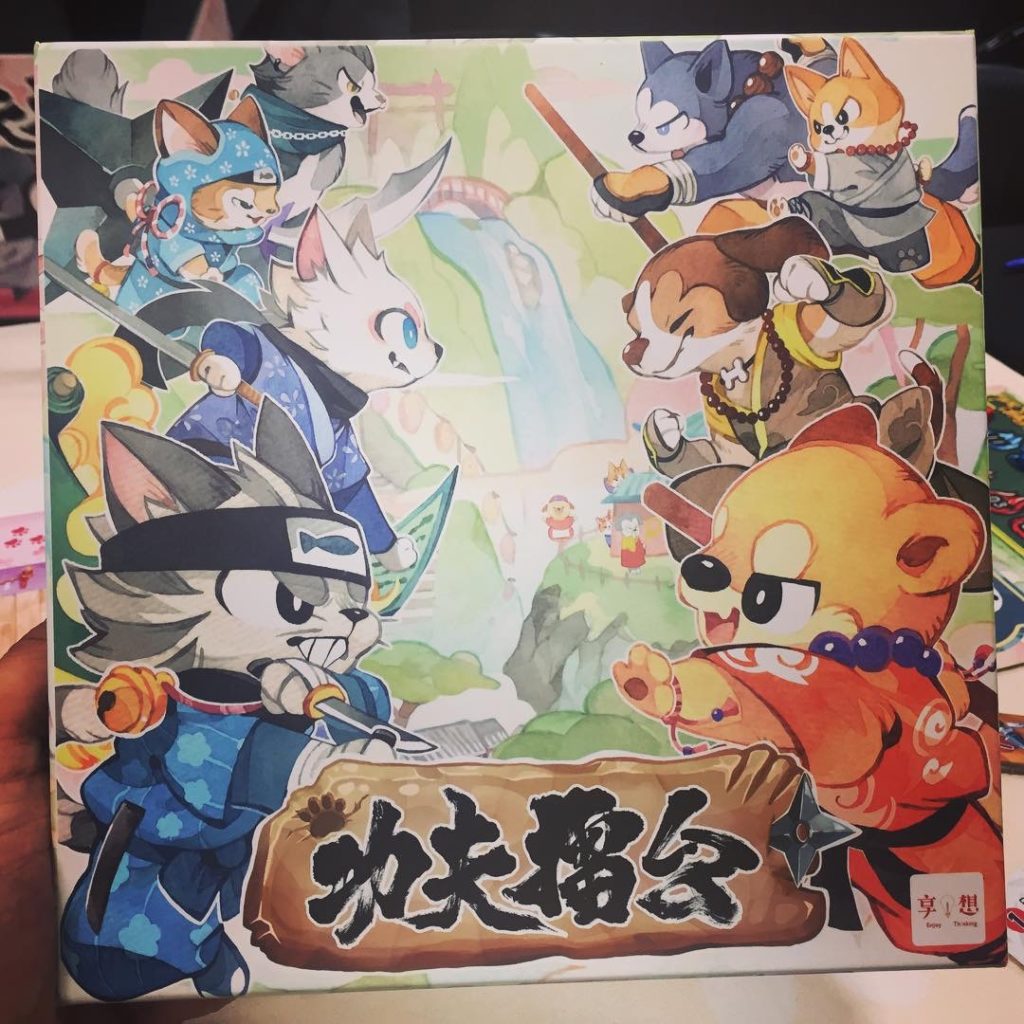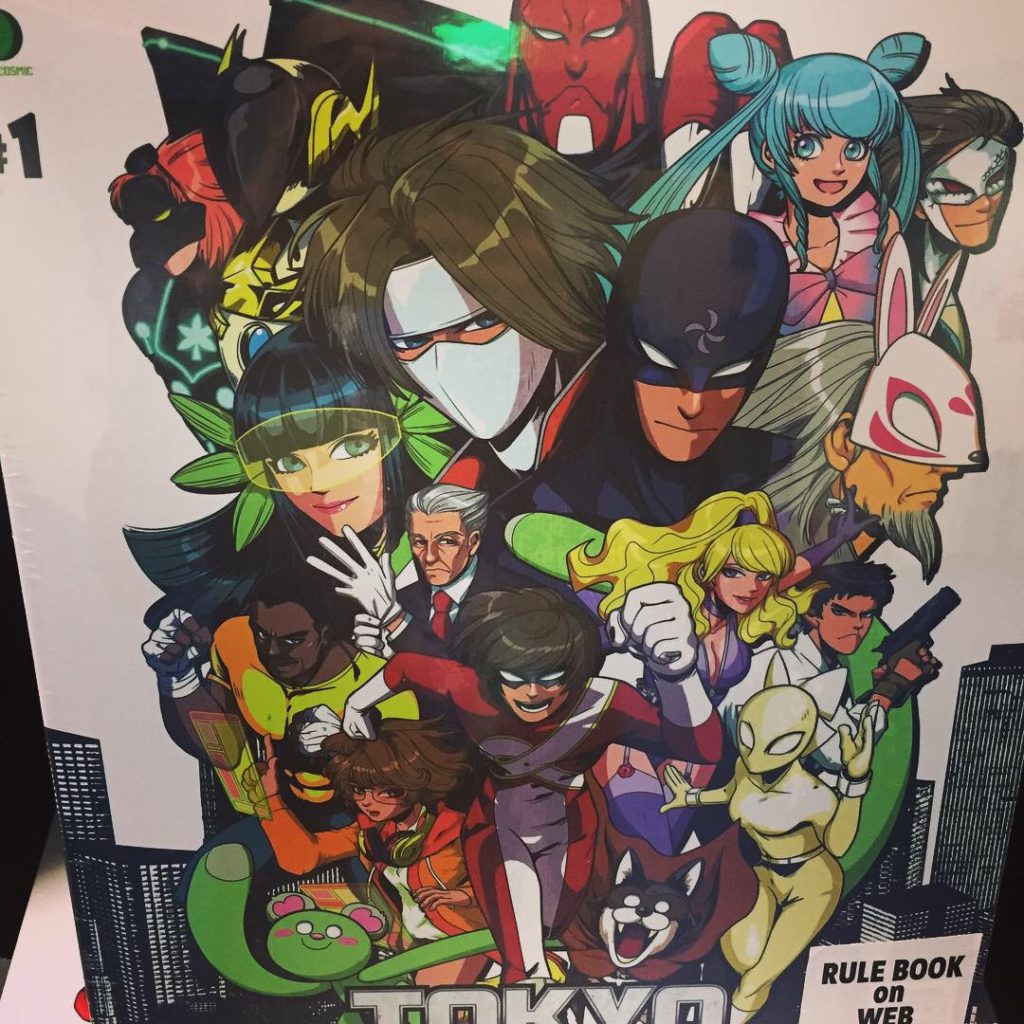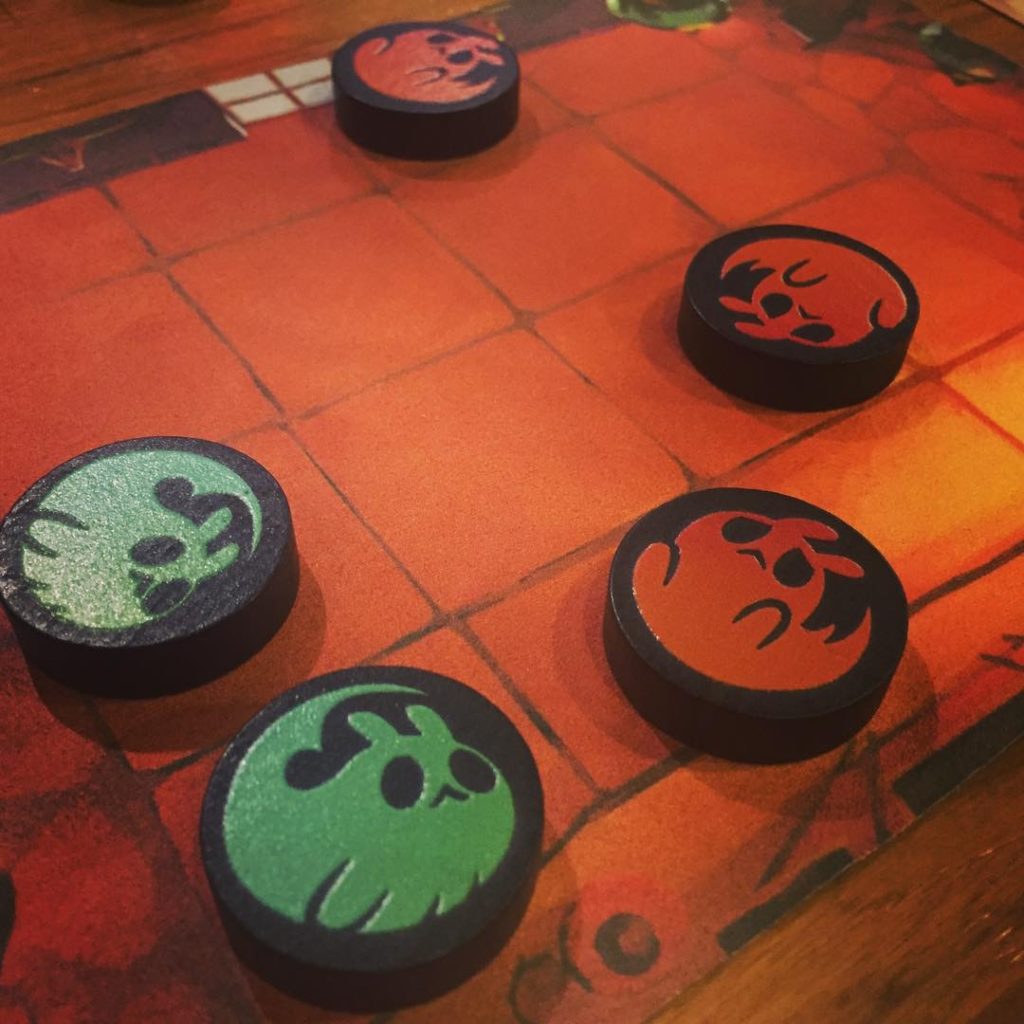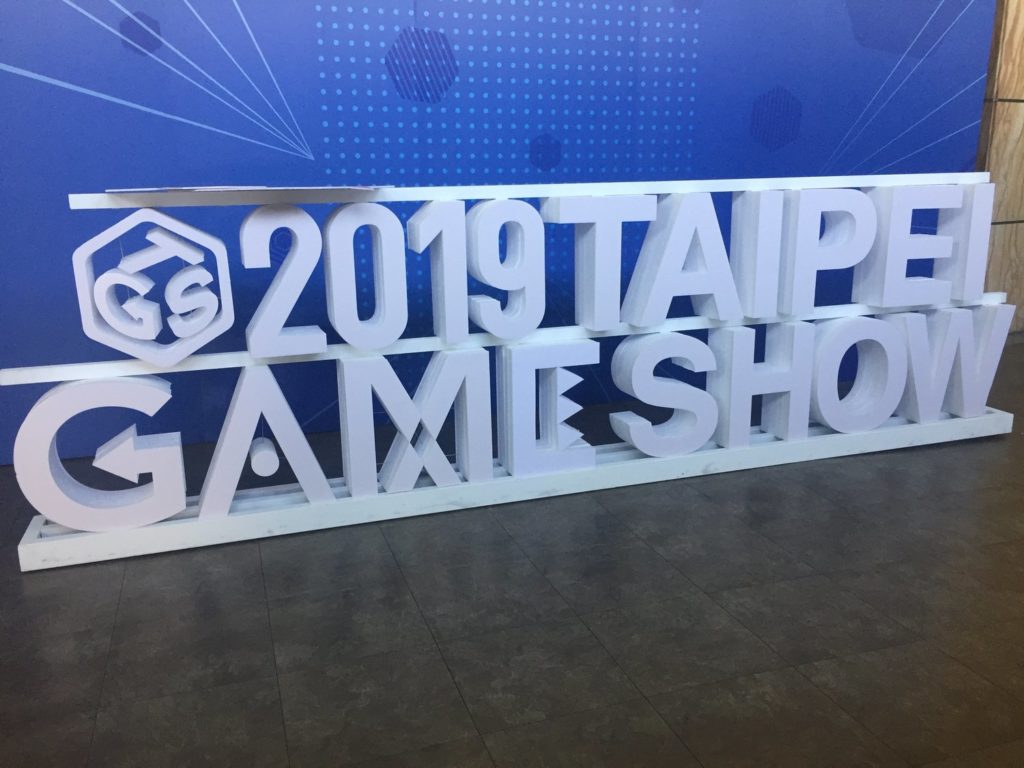The Taipei Game Show has been THE electronics game show in Taiwan for close to two decades now. While there has been space set aside for analog gaming in years past, this was the first year board games were given a separate hall to themselves—well, mostly to themselves. Across the street from Hall 1’s highly financed booths, LED screens, showgirls, and cosplayers stood Hall 3—home to well over 100 indie video game publishers and board game publishers.

This year hosted board game publishers from Singapore, Japan, China, Hong Kong, and of course, Taiwan. Each was excited by this year’s turnout and were not only eagerly awaiting the Tokyo Game Show in May later this year, but also the new annual Moonlight Festival in Kaohsiung, Taiwan in late June.
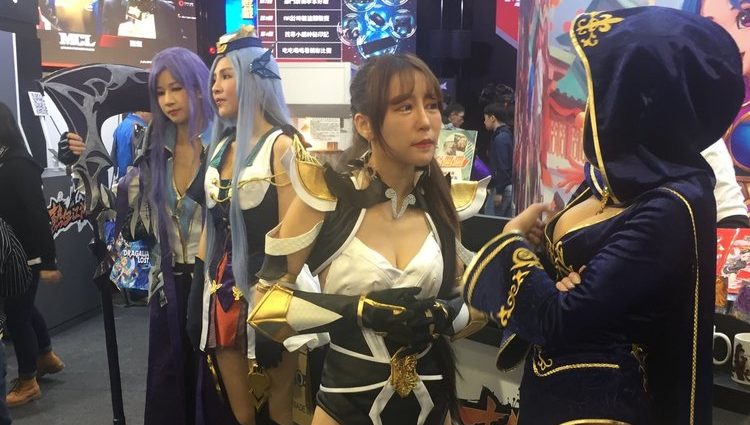
The Asian board game market is booming. With big Western companies like CMON and Asmodee now in Asia, game hunters, and spies are scouting through the hundreds of Asian board games to find the diamond in the rough, license it, and bring it across the seas.
While there weren’t many new games released at TGS this year, there were some definite surprises. Here are the Top 10 board gaming finds of the Taipei Game Show 2019!
11. The Free Google Umbrella
Yes. That’s an umbrella. It’s not a smart umbrella with built-in GPS or anything fancy, but it was a decent umbrella. I presume Google expected it to be raining in Taipei during the time of the expo and decided to help out the ill-prepared foreign expo-goers. Fortunately (but unfortunately for Google) the weekend was met with clear blue skies. I know this is in no way connected to gaming, but I could not not add this to the list somewhere. I also get the added bonus of telling Eric he beat an umbrella, which brings us to sunny number 10…
10. Eric Lang
What better way to kick off the Taipei Game Show than have Taipei’s first board gaming celebrity show up to give a Q&A for local board game designers? Eric Lang (designer of Blood Rage, Rising Sun, Arcadia Quest, Chaos in the Old World, Call of Cthulhu, and more) showed up at Homosapiens Lab the Wednesday before the expo. He talked briefly about his design method and dropped some great quotes wrapped in humor.
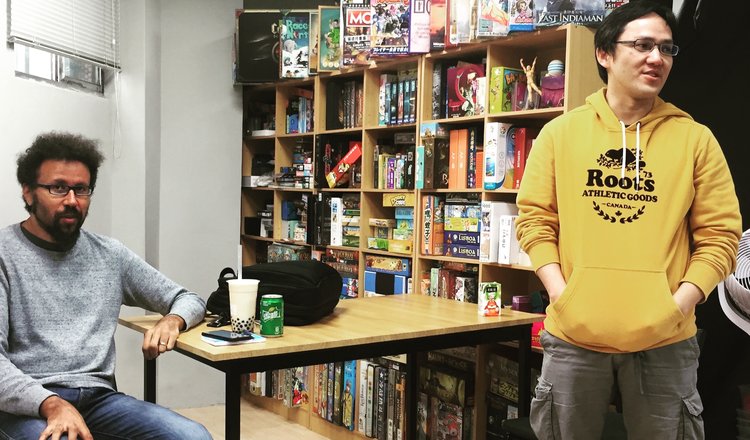
Games can only be on time once, but they can suck forever.
— Eric Lang
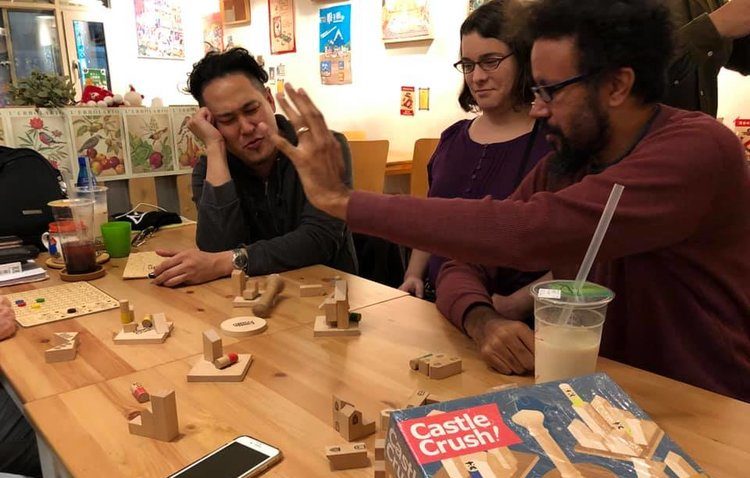
I eventually got to game several games with him and see his playstyle. Eric loves to trash talk, and he’s quite hilarious at it. He also has a deep love for jasmine mint tea with tapioca. No judging. I don’t really get star-struck as opposed to some of my other colleagues. I was more intrigued by CMON’s presence in Singapore, how they’re planning to expand their catalog (while remaining true to their brand), what they’re looking for in Asian games, and what their presence will bring to the Asian board game community. Smoox of Taiwan Boardgame Design was instrumental in bringing Eric Land over and opening Hall 3 for the board game section of the expo. 2019 looks to be just the beginning of greater things to come.
9. Prototypes
One of the best parts of the Taipei Game Show this year was the opportunity to playtest several beta versions of games scheduled to be released later this year or next. Highlights include a cooperative hacker-themed game, an anime-inspired WWII 2-player card game, gangs of jewel thieves working against each other to steal valuable objects from within a mansion, and an abstract game about feuding daimyos from feudal Japan. I cannot say too much about these games. I may have spoken (written) too much already; however, I cannot contain my excitement about these future releases.
8. Old Games Found
The Taipei Game Show was not only a place to play new games and prototypes but was also an excellent hub to hunt and locate some older titles—sometimes through the various stores on the expo floors and sometimes with the people there. I was finally able to pick up a copy of Demon Worker, I’m happy to report that it’s as good as you’ve heard—a solid worker placement game with unique special workers that you fight over. National Economy Mecenat is a standalone sequel to National Economy—also by Japanese designer, Hiroshi Nishimura. NEM is a lightning-fast worker placement game with strong and tense hand management. The art is not great, but wow oh wow is it a good game.
Using poker chips instead of card money really helps this game sing. The fixed economy and explosive combos really make this game a joy to play. Sashi & Sashi really knows me. If he keeps making games about coffee, he knows I’ll keep buying them. And yes, that bigger game is indeed called Psychic Pizza Deliverers Go to the Ghost Town. And yes, you play as pizza delivery boys (and girls) delivering pizza in a town of ghosts. That is a thing now.
7. Flip Over Frog
Not every game needs to be filled with minis and lavish grandiose production. Flip Over Frog from GOTTA2 is light 15-minute kids’ game that was a delight to play and lose. Flip Over Frog is a memory area control game, and for as light as it is, there are some surprisingly tough decisions to be made. Players have a hand of cards and place one card in the garden. Their card will flip over certain adjacent cards. The twist is that each square in this 4×4 grid can hold two cards, so players will have to remember what’s on the opposite side of each square to ensure they have the majority of face-up cards by the end of the game.
It’s even more interesting because nobody knows who is who, so sometimes you’ll be furious at the fish player only to find that nobody was the fish player. Flip Over Frog is a solid game and works great with kids. It’s also available on Nintendo Switch (or will be soon). I got a chance to play with several kids and with the man himself, Yanagawa Kazutaka. If you have never met Kazu, then you’re in for a treat. His energy is infectious, his laughter delightful, and his smile is Level 100 Charm. Flip Over Frog isn’t a revolutionary game, but it perfectly represents the joy of finding those diamonds in the rough and vast sand dunes of Japanese doujin game publishers. Every year there are a crazy number of games published in Japan, and it’s always an adventure playing through them all to find those lost gems. Flip Over Frog is easily one of them.
6. Kardia
WOW. Wood components aren’t cheap, but that didn’t stop Liner Note (Hong Kong) from publishing their first game, Kardia. They’re currently unsure if they want to translate their game for the English or Japanese market next, so we’ll have to wait with our fingers crossed on this one. While I have yet to play a full game, I remain extremely eager to give it the full trial. Kardia is the love child between JRPGs and Talisman.

The rulebook comes with several scenarios, the potential for variable setup, and killer art. There are unique player powers, hidden treasures, monster encounters, and gripping boss battles. You could play a summoner and summon your fallen foes for use in battle! What’s not to love about that?! I’ll be keeping a sharp eye on this one. The English rulebook should be out in beta form by April. Can’t wait!
5. Taro Paradise
Maddish Island Games is a new publisher in the indie gaming world. This Taiwanese publisher only has two games to date but has already learned the art of table presence. Both their booth and their games (currently at two) were an explosion of color. Their booth was consistently full of screams, shouts, hoots, and hollers; however, the wall of sound was drowned out by the art from their games. I’ll let the artwork speak for itself.
4. Kung Fur Fight
Japanese Ninja Cats versus Chinese Shaolin Monk Dogs. What is there to not love about this game?! Kung Fur Fight is a 30-minute deck-building two-player game about bluffing and throwing ridiculous amounts of kunai at each other. Every round three new cards are drawn and fought over. Each faction plays one card from hand face down (behind a player shield) and reveals. The highest played card wins the new card and adds it to their hand. This simple foundation becomes layered with intrigue and strategic depth as each card in the game is unique and both factions play fairly differently. #GoMonkDogs!

New Taiwanese board game publisher, Enjoy Thinking, enters the indie gaming world with a fury of fists and cute cuddly kung fu creatures. After only 10 minutes of play, I was in love with this adorable little two-player game. The English version should be out later in Q2 2019. Enjoy Thinking is still unsure whether Kung Fur Fight will make it to Essen or not this year, but this one really took me by surprise.
3. Tokyo Sidekick
Tokyo Sidekick is HUGE. The box’s odd shape will surely turn some gamers off. That would be a mistake as it’s a great cooperative gaming experience. In Tokyo Sidekick, players role-play as both a legendary masked vigilante in Tokyo and their sidekick. Players will run, drive, and fly over the streets of Tokyo helping out locals with local low-level criminals as well as fighting against not one, not two, but three master criminals.


This is not an easy game, but wow is it hilariously good times. Players can level up their characters, unlock special abilities, level up their sidekicks, and can even turn the master criminal’s henchmen to the side of justice! Tokyo Sidekick would explode off the table if the tiny publisher had deeper pockets for minis; however, as my time in the underworld of Gloomhaven has taught me, not every game needs minis. Tokyo Sidekick’s art direction is fantastic and definitely enjoys exploring and celebrating comic book art and flare.
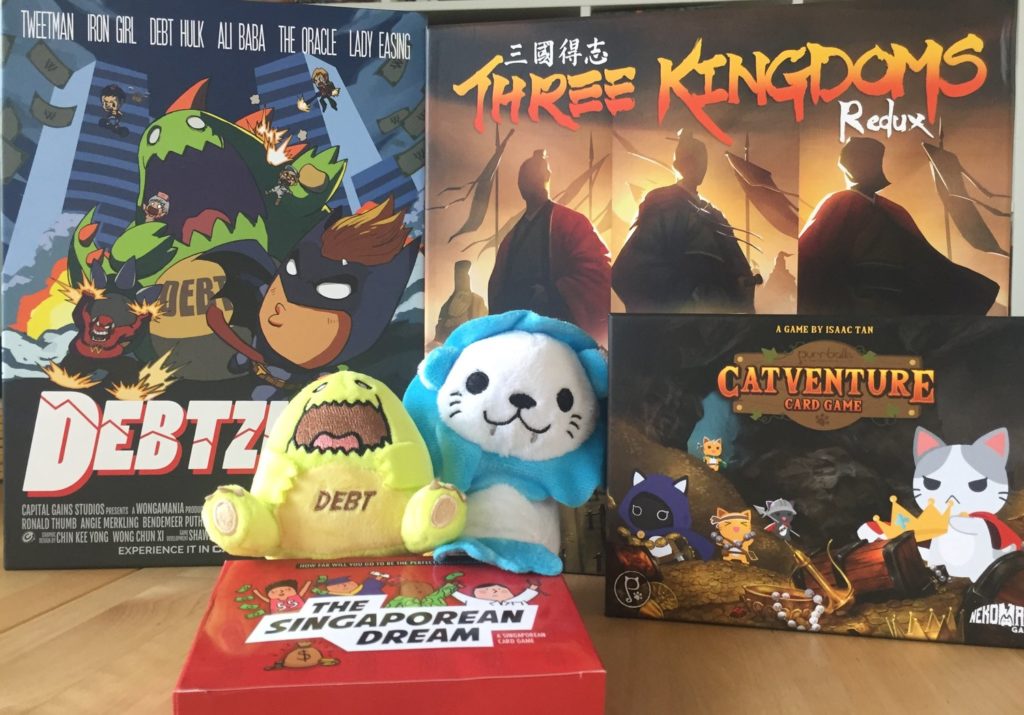
2. Singapore & Origame!
Singapore came to the Taipei Game Show! I got to meet with Daryl Chow of Origame.co and founder of Singapore Game Makers, a design collective spearheading Singaporean board game design. If his name sounds familiar, you may have heard it during his successful Kickstarter campaign from last year—The Artemis Project. Daryl and I had a passionate discussion about the board gaming scene not only in Singapore but in all of Asia in general. Singapore shares some of the same troubles as Taiwan. The publishers are all long-time gamers and enjoy heavier games; however, the local market hasn’t caught up with them, so their games have to be somewhere in-between—easy to learn but with tense decisions. He showed me Debtzilla, Singaporean Dream, Catventure, and the granddaddy of modern Singaporean board game design—Three Kingdoms Redux. I’m looking forward to exploring these games and seeing what they have to offer!
1. Soulaween
Taiwanese publisher, Play With Us Designs, is known for their tight designs and small boxes—bigger than the standard Oink-sized game. Last year’s set collection card game, Wonderland XIII, sold out at Essen last year and got a ton of praise for its art design. Vita Mors not only received rave reviews for its art direction but also received praise for its attempt to create an action-driven (as opposed to language-driven) social deduction game.

Their newest release, Soulaween, is a simple two-player abstract game that blends Othello, Connect Four, and individual player powers. Soulaween is by far their best game to date. I quickly found myself playing it everywhere: at a coffee shop, a Japanese BBQ, at a bar, and even on a train. It’s that classic boutique Asian board game—a simple rule set with tense decisions. There’s also its large double-sided wooden pieces, microfiber cloth board, and its adorable death god academy theme. Toss that all in its tiny little box, and you get what looks to be one of the Top 10 Asian board games of 2019—and it’s only January.
明年見,台北國際電玩展!
I would like to give a big shoutout to all the publishers and designers for all the review copies. Last weekend was unforgettable. It’s hard to hate a weekend that was full of games, food, laughter, and amazing gaming experiences. It’s rough to say goodbye, but there are a dozen more conventions and expos from now until next year! In fact, Cardboard East will also be at the Tokyo Game Show this year! Thanks for reading and Happy Chinese New Year!



